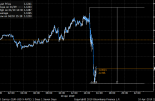MUFG: EM inflation relief brings lower policy rates into clearer view

Headline inflation rates in most EMs continue to surprise to the downside, driven primarily by base effects in energy and food prices. Even in EMs, where price pressures have been remarkably high (notably in EM EMEA), inflation is now declining.
As we catalogued recently, the considerable differences in inflationary pressures across EM economies continue to imply the need for different monetary policy paths – more dovish in EM Asia and LatAm than in EM EMEA. After more proactive and acute monetary tightening last year, we believe that LatAm is well-positioned to start the cycle (Chile this week and Brazil in August). In EM Asia, China has already cut its OMO rate by 10bp to 1.9% last month.
Meanwhile, in EM EMEA, while there are some central banks delivering further rate hikes (Russia and Turkey), Poland has offered clear guidance that it plans to cut in September.
FX views
EM currencies have given back some of their recent gains after the USD staged a modest rebound over the past week after hitting fresh year to date lows earlier this month. The USD has been supported over the past week by a pick-up in US yields. US rate market participants have scaled back expectations over the scale of Fed rate cuts next year in response to the run of strong US activity data.
Week in review
In the last week, central banks surprised the market with their monetary policy moves - SARB left rates unchanged, while Turkey raised rate lesser than market expectations, and Russia raised policy rate higher than consensus.
Week ahead
This week, we will have rates meetings in Hungary (MUFG and consensus on hold at 13.00%) and Ukraine (MUFG: -200bp to 23.00%; consensus: 22.50%). Additionally, the Central Bank of Turkey (CBRT) is set to release its latest quarterly inflation report. Beyond EMs, it’s a busy week on the rates calendar with the Federal Reserve, ECB and Bank of Japan (BoJ) all set to decide their next move monetary policy.
Forecasts at a glance
In a world of tightening global financial conditions and questions about the liquidity implications of the now-finalised US debt ceiling, we see a degree of macro risks for EM economies in H2 2023, with external funding requirements the central concern. We expect EM growth to trough this year but remain below potential in the 2024 recovery. The silver lining is that subdued growth should cap inflation, facilitating monetary policy easing where external balances allow.
Core indicators
According to IIF data, the weekly inflows into EM bond funds were at USD0.8bn, while outflows from EM equities were at USD1.1bn in the week ending 21 July.










